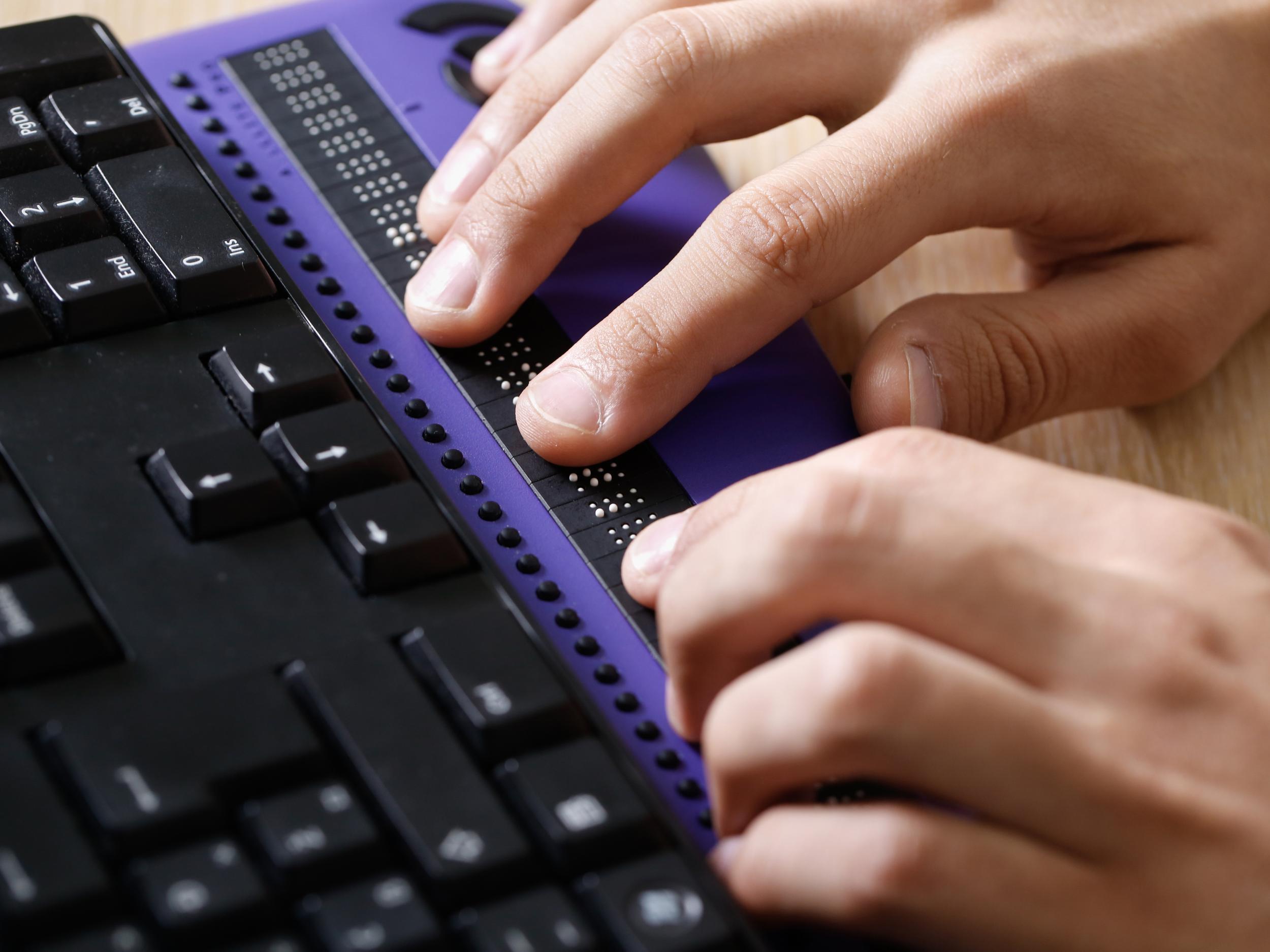Happy birthday, Braille: how writing you can touch is still helping blind people to read and learn
Some thought technology would make braille redundant – but the real threat is a lack of education and resources

Your support helps us to tell the story
From reproductive rights to climate change to Big Tech, The Independent is on the ground when the story is developing. Whether it's investigating the financials of Elon Musk's pro-Trump PAC or producing our latest documentary, 'The A Word', which shines a light on the American women fighting for reproductive rights, we know how important it is to parse out the facts from the messaging.
At such a critical moment in US history, we need reporters on the ground. Your donation allows us to keep sending journalists to speak to both sides of the story.
The Independent is trusted by Americans across the entire political spectrum. And unlike many other quality news outlets, we choose not to lock Americans out of our reporting and analysis with paywalls. We believe quality journalism should be available to everyone, paid for by those who can afford it.
Your support makes all the difference.Louis Braille, who was born on 4 January 1809, invented a tactile reading and writing system that transformed the lives of countless people with severe vision impairments or blindness. Braille was blind himself, and first came up with the idea for a form of writing you can read by touch while he was still at school.
Braille code is made up of 64 characters, based on a matrix of six raised dots, which were historically embossed on paper. Different formations of these dots can represent a single letter, a combination of letters or a word. For nearly 200 years, braille code has enabled people with vision impairments around the world to get an education.
But now, technology offers visually impaired people new opportunities to access information. Today’s computers and mobile devices are equipped with speech functions, which can read information aloud for blind users. So some are wondering whether braille is still needed.
Yet based on the research we’ve done at the University of Birmingham’s Vision Impairment Centre for Teaching and Research, we would argue that technology and braille are allies, rather than competitors.
The truth is, technology and braille code have always worked well together. After all, braille’s success is closely linked to the technological developments that enabled the code to be written and mass-produced. Braille writing frames, mechanical writing machines, such as the Perkins brailler, and braille embossers – which are essentially braille printers – have all helped to make braille more accessible today than ever before.
Many products have braille embossed on their packaging, including groceries. And it is now a legal requirement to have braille labels on all medicine packaging. Indeed, our own research underpins this international standard.
This trend also reflects the improvements in national and international laws regarding disability. But there is no doubt that better technology has played a crucial role in opening up opportunities for people with vision impairment to enjoy greater access to information.
For example, the refreshable braille display arrived on the scene in recent decades. These braille displays link up to computers, and present text in a line of braille characters, which are refreshed as the user reads each line. This portable technology has transformed the way that many vision impaired people use braille, enabling them to read online information and communications anywhere, anytime.
Braille was adopted gradually around the world, and has undergone many changes to its rules and conventions since Louis Braille’s death. The latest technology is merely part of this evolution. There’s evidence to suggest new technologies are making access to braille easier, faster and cheaper.
This has certainly been true for participants in our ongoing longitudinal transitions study, who have benefited from using braille at university for following notes during a lecture or proofreading an essay. It’s one of several vital learning tools; they also wield technology such as computers and smart phones with impressive skill.
The real threat to the future of braille stems not from the emergence of new technology, but from a lack of educational resources and guidance. In the UK, as in many other countries across the globe, teachers must have a specialist qualification to teach children with vision impairment; and this includes learning how to teach braille as a route to literacy.
But several national studies suggest there is considerable variation when it comes to the way braille is taught. When we reviewed these studies in 2011, we found no evidence to support the view that technology has an adverse effect on the development of literacy through braille.
We did discover there is limited information for teachers about how to teach braille literacy in mainstream schools. Although more teaching resources have been developed since then, there’s still a great need to redevelop a standardised braille reading test. The previous test was created in the Nineties, but is based on an outdated print reading test.
In the current climate, where teaching services are under a great deal of financial pressure, we must ensure braille teaching is not neglected. Louis Braille’s invention remains a potent symbol of disabled people’s independence and empowerment. It is still a hugely important route to literacy for blind people. Braille can and should be used together with other technologies, so people with vision impairments can access the great wealth of information available in the digital era, and learn independently.
Graeme Douglas and Mike McLinden are professors of education at the University of Birmingham and Rachel Hewett is a research fellow in disability and inclusion at the University of Birmingham. This article was originally published on The Conversation (conversation.com)
Join our commenting forum
Join thought-provoking conversations, follow other Independent readers and see their replies
Comments